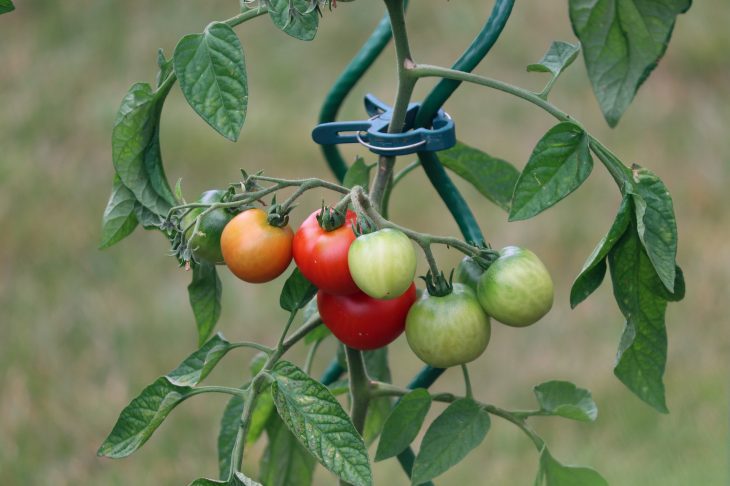Hydroponic tomato pests and diseases happen even if the hydroponic systems are cleaner and easier to maintain than growing in soil. There are greenhouse specific pests and diseases, tomato specific pests and diseases and generic hydroponic problems. Excess heat, very dry or humid air, poor nutrition or poor light are all possible causes that can lead to hydroponic tomato diseases.
The good news is that hydroponic systems make things easier to contain and fix.
Read more about the best tomato for indoor hydroponics.
Pests in hydroponic tomatoes
Aphids & Whitefly
Whitefly are responsible of Tomato Yellow leaf curl disease – leaves are reduced in size and wrinkled, yellowed between the veins, and have margins that curl upward. Cleaning the leaves with soapy water should be enough to solve the problem in controlled environments. Outside they can be controlled by their natural enemies lacewings, hoverflies, mirid bugs and damsel bugs.
Spider mites
Easy to spot because of their web, spider mites prefer the undersides near the leaf veins and the affected leaves become yellowish white and mottled. To control the spider mites you should spray the plants with water, neem oil which is a natural pesticide or insecticidal soaps.
Leaf Miners
The tomato leaf miners are a major pest of field- and greenhouse-grown tomatoes. The larvae is eating the chlorophyll-rich mesophyll cells – this leaves an irregular track of dead tissue that looks white.
Merideth Cohrs has a complete list of 21 tomato pests with detailed explanations.
Hydroponic tomato plants diseases
Molds & Mildews
Tomato leaf mold is typically an issue in greenhouse and indoor growing with humidity greater than 85%, so hydroponic growers should pay attention to the early signs: small gray, yellow, white, or pale green patches. Fungicidal sprays or apple-cider and vinegar mix should help contain the mold
Early blight in tomato
The early blight infection should be recognized by small dark spots form on older foliage near the ground. To control it, you should apply fungicides and provide a good air circulation.
Fusarium Wilt
Fusarium wilt is a disease that causes leaves to yellow, fade and stunt new growth.
Nutrient Deficiency in hydroponic tomatoes
Nutrient deficiencies are important to spot early on as hydroponic systems are prone to these, because unlike soil based growing, in hydroponics we control everything and it’s easy to miss.
Nitrogen deficiency in hydroponic tomatoes
A common deficiency is usually spotted when older leaves begin to turn yellow and affected leaves will develop a bronze tinge.
Magnesium deficiency
Magnesium deficiency is recognized by yellow / brown blotches in between the leaf veins and leaves will fall earlier.
Calcium deficiency
Initially, Calcium deficiency is causing leaves to curl. In more advanced stages, it leads to blossom end rot.
Zipgrow goes through all mineral deficiencies specific to hydroponic growing:
Specific Hydroponic system problems for tomato
Depending on your hydroponic system, tomato plants are quickly affected by any deficiencies: for ebb and flow systems or nutrient film technique, a simple pump failure or power outage will leave the plants dry. In deep water cultures like the Kratky method, root rot might be an issue.



